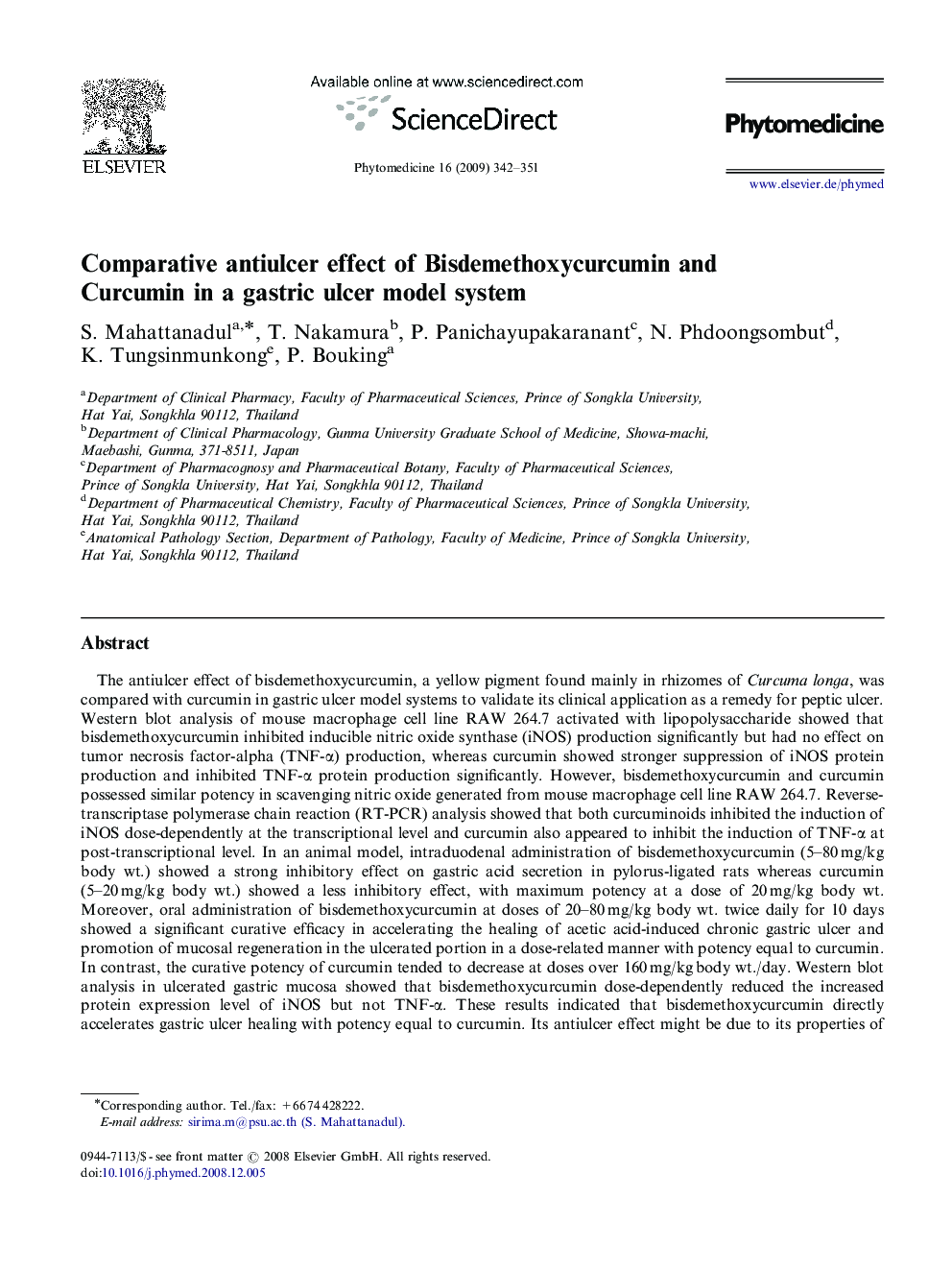| کد مقاله | کد نشریه | سال انتشار | مقاله انگلیسی | نسخه تمام متن |
|---|---|---|---|---|
| 2497312 | 1116196 | 2009 | 10 صفحه PDF | دانلود رایگان |

The antiulcer effect of bisdemethoxycurcumin, a yellow pigment found mainly in rhizomes of Curcuma longa, was compared with curcumin in gastric ulcer model systems to validate its clinical application as a remedy for peptic ulcer. Western blot analysis of mouse macrophage cell line RAW 264.7 activated with lipopolysaccharide showed that bisdemethoxycurcumin inhibited inducible nitric oxide synthase (iNOS) production significantly but had no effect on tumor necrosis factor-alpha (TNF-α) production, whereas curcumin showed stronger suppression of iNOS protein production and inhibited TNF-α protein production significantly. However, bisdemethoxycurcumin and curcumin possessed similar potency in scavenging nitric oxide generated from mouse macrophage cell line RAW 264.7. Reverse-transcriptase polymerase chain reaction (RT-PCR) analysis showed that both curcuminoids inhibited the induction of iNOS dose-dependently at the transcriptional level and curcumin also appeared to inhibit the induction of TNF-α at post-transcriptional level. In an animal model, intraduodenal administration of bisdemethoxycurcumin (5–80 mg/kg body wt.) showed a strong inhibitory effect on gastric acid secretion in pylorus-ligated rats whereas curcumin (5–20 mg/kg body wt.) showed a less inhibitory effect, with maximum potency at a dose of 20 mg/kg body wt. Moreover, oral administration of bisdemethoxycurcumin at doses of 20–80 mg/kg body wt. twice daily for 10 days showed a significant curative efficacy in accelerating the healing of acetic acid-induced chronic gastric ulcer and promotion of mucosal regeneration in the ulcerated portion in a dose-related manner with potency equal to curcumin. In contrast, the curative potency of curcumin tended to decrease at doses over 160 mg/kg body wt./day. Western blot analysis in ulcerated gastric mucosa showed that bisdemethoxycurcumin dose-dependently reduced the increased protein expression level of iNOS but not TNF-α. These results indicated that bisdemethoxycurcumin directly accelerates gastric ulcer healing with potency equal to curcumin. Its antiulcer effect might be due to its properties of decreasing gastric acid secretion and enhancing the mucosal defensive mechanism through suppression of iNOS-mediated inflammation.
Journal: Phytomedicine - Volume 16, Issue 4, April 2009, Pages 342–351